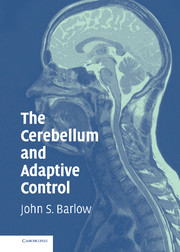Book contents
- Frontmatter
- Contents
- Preface
- Acknowledgments
- PART ONE ANATOMY AND PHYSIOLOGY OF THE CEREBELLAR SYSTEM
- 1 Introduction
- 2 Comparative Anatomy of the Cerebellum
- 3 Anatomy and Physiology of the Cerebellar Cortex
- 4 The Mossy Fiber Afferent System
- 5 The Inferior Olivary System and the Climbing Fibers
- 6 The Cerebellar Nuclei and Their Efferent Pathways: Voluntary Motor Learning
- PART TWO CEREBELLAR FUNCTIONS
- PART THREE MODELS AND THEORIES
- PART FOUR SUMMARY AND CONCLUSIONS
- APPENDIX A A Hybrid Analogue/Digital Multiplexer/Multiplier-Based Adaptive Signal Processor
- Author's Note
- Bibliography
- Index
5 - The Inferior Olivary System and the Climbing Fibers
Published online by Cambridge University Press: 28 October 2009
- Frontmatter
- Contents
- Preface
- Acknowledgments
- PART ONE ANATOMY AND PHYSIOLOGY OF THE CEREBELLAR SYSTEM
- 1 Introduction
- 2 Comparative Anatomy of the Cerebellum
- 3 Anatomy and Physiology of the Cerebellar Cortex
- 4 The Mossy Fiber Afferent System
- 5 The Inferior Olivary System and the Climbing Fibers
- 6 The Cerebellar Nuclei and Their Efferent Pathways: Voluntary Motor Learning
- PART TWO CEREBELLAR FUNCTIONS
- PART THREE MODELS AND THEORIES
- PART FOUR SUMMARY AND CONCLUSIONS
- APPENDIX A A Hybrid Analogue/Digital Multiplexer/Multiplier-Based Adaptive Signal Processor
- Author's Note
- Bibliography
- Index
Summary
In view of the importance attached to the climbing fibers and the inferior olivary nucleus (also termed the inferior olivary complex, inferior olive, or simply IO) in a number of theories of cerebellar function (Chapters 13, 14, 16, and 17), its anatomy and physiology is surveyed in some detail (see also Chapter 6).
The sequence of topics in this chapter is as follows: organization of the inferior olivary nucleus itself; its afferent input from the periphery; projections to it from other structures (e.g., the cerebellar nuclei); and finally, the climbing fibers (i.e., the output system from the inferior olive to the cerebellar cortex with their collaterals to the cerebellar nuclei). The chapter closes with a consideration of theories of function of the inferior olivary nucleus and a discussion of modulation of sensory (peripheral) input to the inferior olive. For purposes of differentiation, arbitrarily, afferent refers to input derived from the periphery, whereas projection refers to input derived from or directed to another brain structure (e.g., cerebellar cortex or nucleus).
The Inferior Olivary System
Organization of Inferior Olivary Nucleus
The inferior olive is a folded gray mass in the medulla, lying just above and slightly lateral to the pyramidal tracts (Fig. 5.1), and consists of a principal olive and dorsal and medial accessory olives. The principal olive (Fig. 5.2, bottom, 4) is a folded narrow band of cells in which a ventral and a dorsal lamella can be distinguished.
- Type
- Chapter
- Information
- The Cerebellum and Adaptive Control , pp. 42 - 67Publisher: Cambridge University PressPrint publication year: 2002



